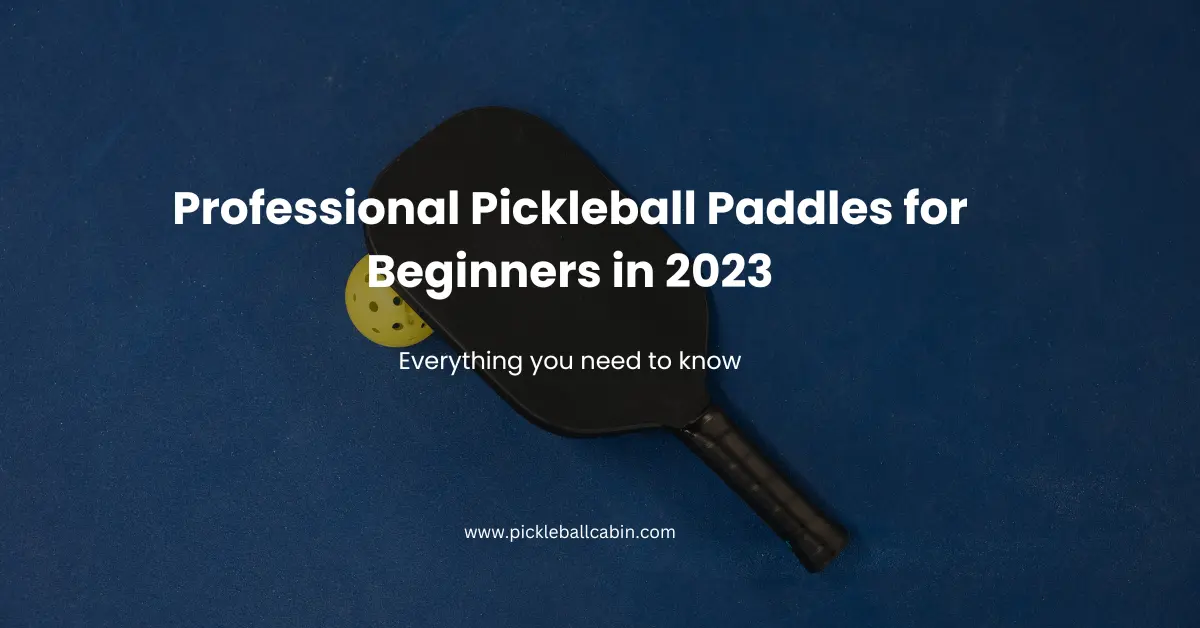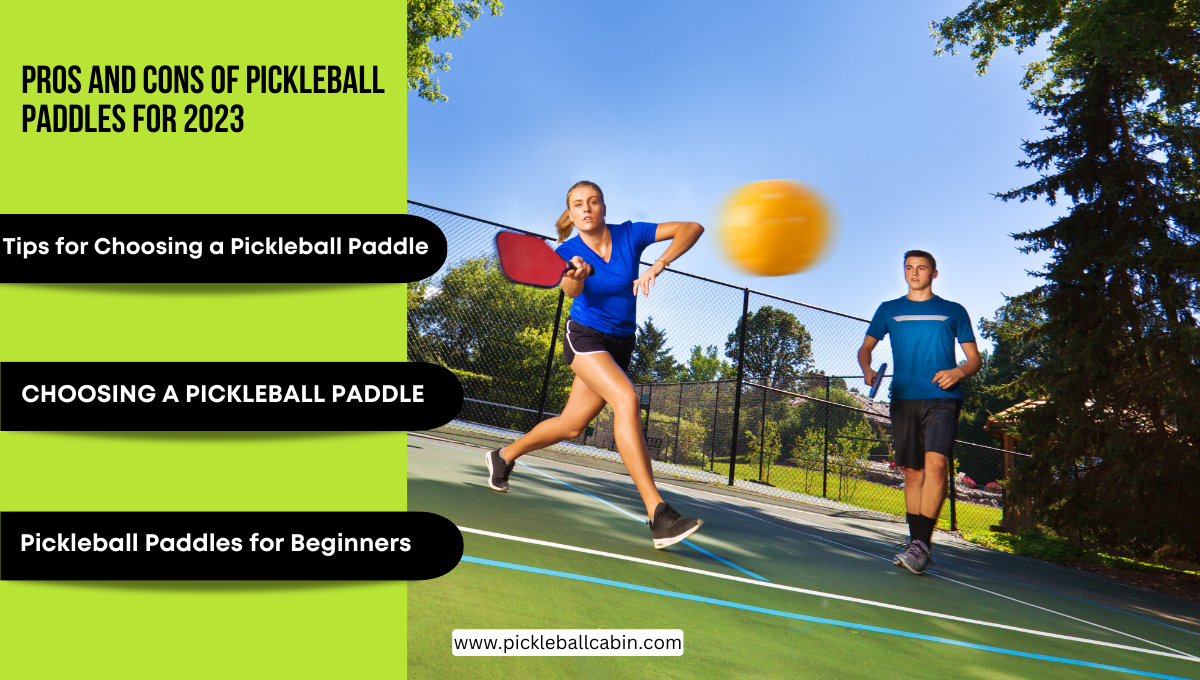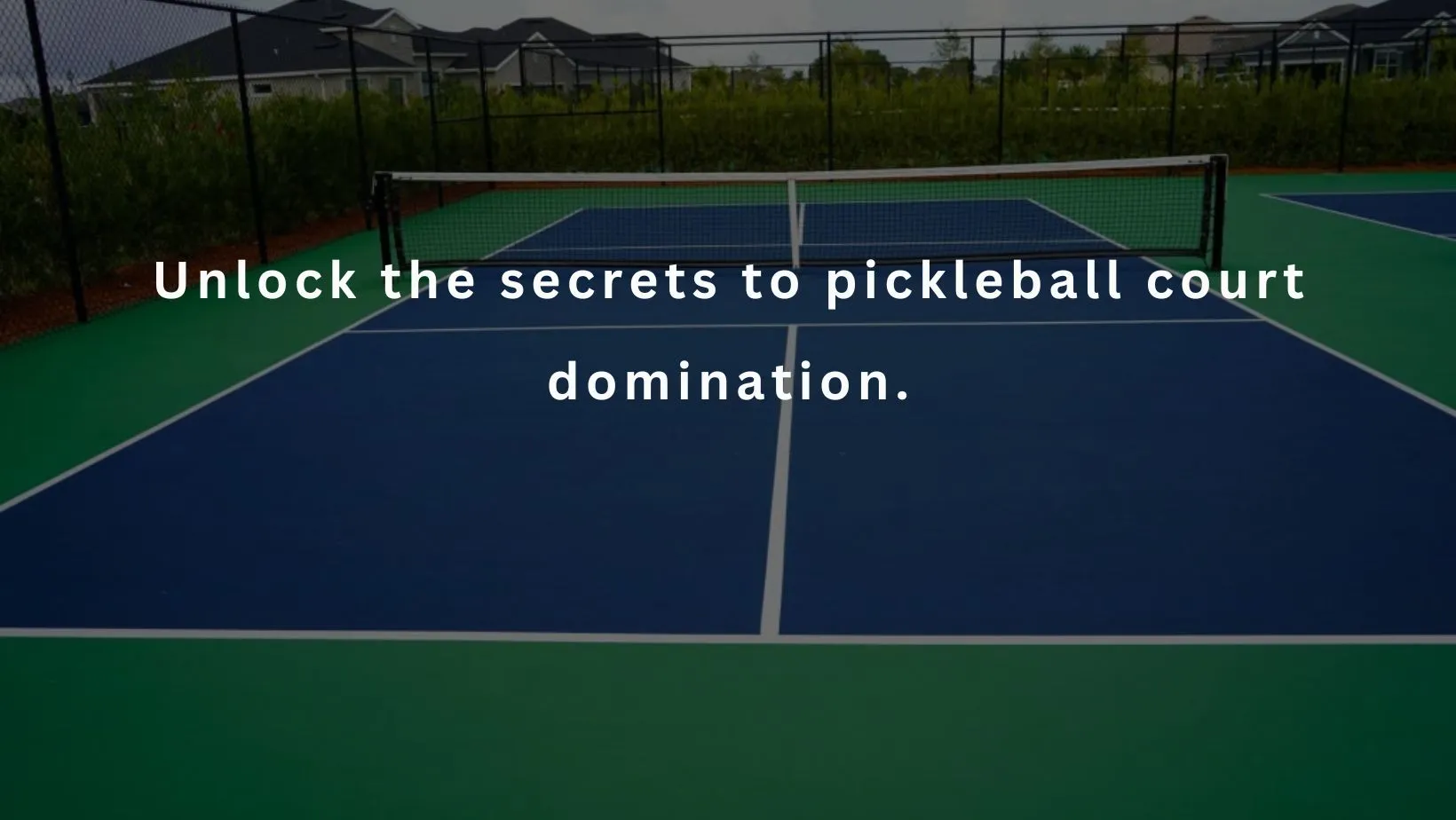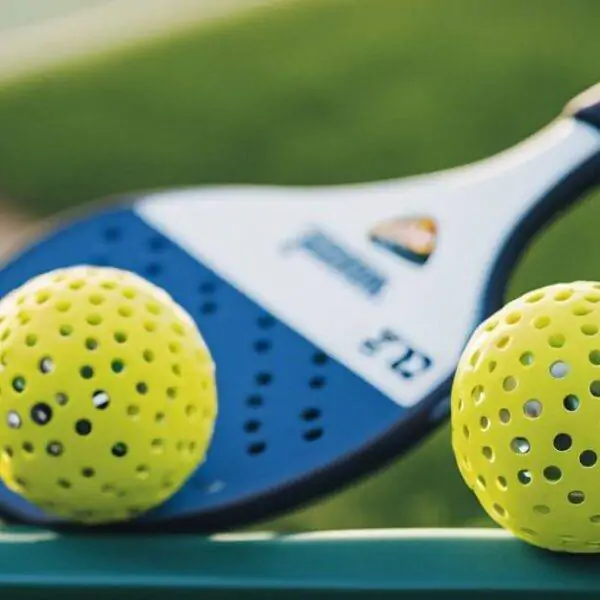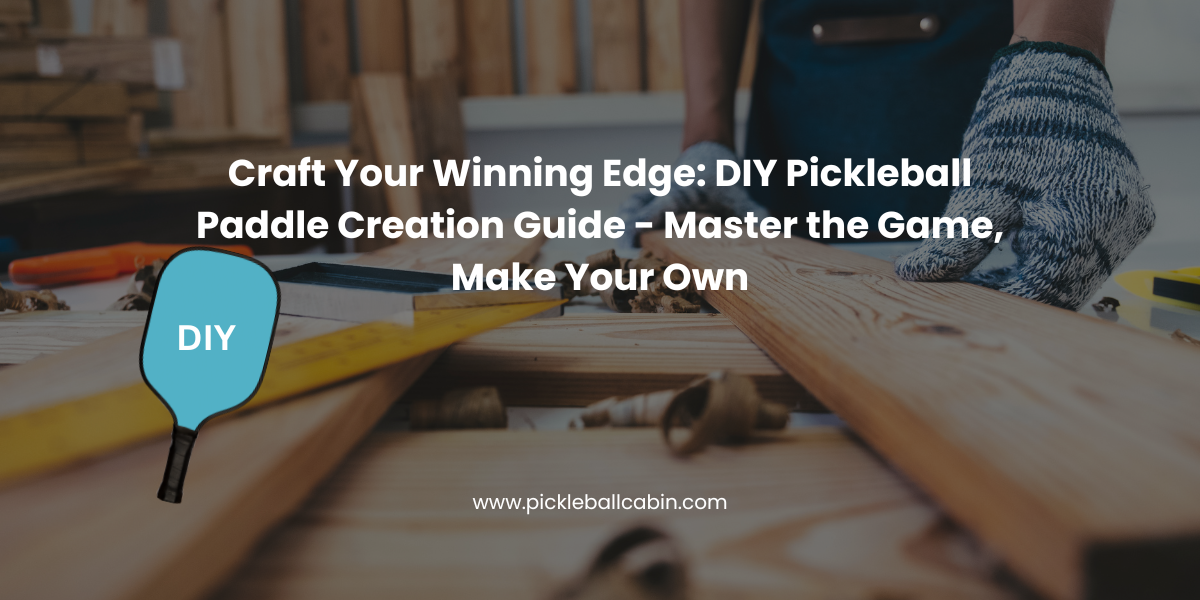Lightweight Pickleball Paddle
In the world of pickleball, having the right equipment is crucial to your performance on the court. One of the key pieces of equipment that can greatly impact your game is a lightweight pickleball paddle.
In this article, we will explore the benefits of using a lightweight paddle and provide some recommendations to help you choose the best one for your needs.
Why Choose a Lightweight Pickleball Paddle?
1. Maneuverability
One of the primary advantages of using a lightweight pickleball paddle is its maneuverability. A lighter paddle allows for quick and effortless swings, making it easier to react to fast-paced shots and maneuver the ball with precision. Whether you are a beginner or an experienced player, having a lightweight paddle can greatly enhance your ability to control the game.
- Lightweight paddles are designed to be easy to handle and swing, allowing for quick reactions and precise shot placement.
- The reduced weight of the paddle enables players to make quick adjustments and change the direction of the ball swiftly.
- With a lightweight paddle, players can easily switch from defensive to offensive shots, giving them an edge during intense rallies.
2. Less Fatigue
A lightweight paddle puts less strain on your arm and shoulder muscles, reducing the risk of fatigue during prolonged play. With a lighter paddle, you can enjoy longer and more intense matches without feeling weighed down. This is particularly beneficial for players who have joint issues or prefer a lighter feel to their equipment.
- The reduced weight of a lightweight paddle helps to minimize the strain on the arm and shoulder muscles, allowing players to maintain a high level of performance for extended periods.
- Players can engage in longer practice sessions or competitive matches without experiencing excessive fatigue, enabling them to focus more on their game and strategy.
- For players with joint issues or physical limitations, a lightweight paddle can be a game-changer, allowing them to play comfortably and enjoy the sport without unnecessary discomfort.
Read also; How To Choose A Comfortable Pickleball Paddle For Optimal Play
3. Greater Speed
Another advantage of using a lightweight pickleball paddle is the increased speed it offers. With less weight to swing, you can generate greater paddle head speed, resulting in more powerful shots. The added speed can give you a competitive edge, allowing you to surprise your opponents with swift and aggressive shots.
- The lighter weight of the paddle enables players to swing it at a higher velocity, generating greater paddle head speed and ultimately delivering more powerful shots.
- Increased speed can be advantageous during fast-paced exchanges, as it allows players to hit the ball harder and potentially catch their opponents off guard.
- The combination of speed and power offered by a lightweight paddle can make it easier for players to execute shots such as smashes, drives, and deep serves.
Also Read; Improve Your Game With Speed Enhancing Pickleball Paddle
4. Improved Control
When it comes to pickleball, control is key. A lightweight paddle provides enhanced control over the ball, allowing you to place your shots with greater accuracy. The lighter weight allows for better finesse and touch, enabling you to execute precise drop shots, dinks, and volleys. If you value control and finesse in your game, a lightweight paddle is a must-have.
- Lightweight paddles offer players the ability to finesse the ball and execute shots with greater accuracy, thanks to their improved control.
- The reduced weight allows for better touch and feel, making it easier to execute delicate shots such as drop shots, dinks, and volleys.
- A lightweight paddle provides players with the necessary control to manipulate the ball’s trajectory and placement, enabling them to strategically outmaneuver their opponents.
Choosing the Right Lightweight Pickleball Paddle
When selecting a lightweight pickleball paddle, there are several factors to consider. Here are some key points to keep in mind:
1. Paddle Material
The material of the paddle affects its weight, durability, and overall performance. Lightweight paddles are commonly made of materials such as graphite, carbon fiber, or composite materials. Graphite paddles are known for their lightness and maneuverability, while carbon fiber paddles offer excellent power and control. Consider your playing style and preferences to determine which material suits you best.
- Graphite paddles are popular among players who prioritize maneuverability and quick swings. These paddles are lightweight and provide excellent control and responsiveness.
- Carbon fiber paddles are favored by players seeking maximum power and control. They are known for their strength, stiffness, and ability to generate powerful shots.
- Composite paddles combine different materials to offer a balanced performance. They typically provide a good blend of power, control, and lightweight design.
Read More about Pickleball Paddle Materials here;
Composite vs Graphite Pickleball Paddle
Carbon Fiber vs Graphite Pickleball Paddle
2. Grip Size
The grip size of a paddle plays a significant role in your comfort and control. Choose a grip size that feels comfortable in your hand and allows you to maintain a firm hold on the paddle throughout the game. A grip that is too small may result in less control, while a grip that is too large can cause discomfort and hinder your performance. Experiment with different grip sizes to find the one that suits you best.
- A proper grip size ensures a comfortable and secure hold on the paddle, preventing it from slipping during play.
- A grip that is too small can lead to loss of control, as players may struggle to maintain a stable grip and execute shots accurately.
- On the other hand, an excessively large grip can strain the hand and limit maneuverability, impacting the player’s ability to react quickly and make precise shots.
Read more about Grip at; Mastering Pickleball Paddle Grip
3. Paddle Shape
Pickleball paddles come in various shapes, including widebody, standard, and elongated. Each shape offers different benefits and playing characteristics. Widebody paddles have a larger hitting surface, providing a larger sweet spot and more forgiving shots. Standard-shaped paddles offer a balanced blend of power and control. Elongated paddles, also known as elongated teardrop or blade paddles, offer increased reach and maneuverability. Consider your playing style and preferences when choosing the shape of your paddle.
- Widebody paddles are ideal for players who prioritize a larger hitting surface and a larger sweet spot. These paddles offer more forgiveness on off-center hits, granting players confidence in their shots.
- Standard-shaped paddles are versatile and suitable for players who seek a balanced performance. They offer a good combination of power, control, and maneuverability.
- Elongated paddles provide players with extended reach and enhanced maneuverability. These paddles are popular among players who value their ability to cover a larger area of the court and execute shots with precision.
4. Paddle Weight
While the focus of this article is on lightweight paddles, it’s important to note that lightweight is a relative term. Paddle weight usually ranges from 6 to 10 ounces, with lighter paddles falling towards the lower end of the spectrum. It’s recommended to try out different paddle weights to determine your ideal balance between maneuverability, power, and control. Keep in mind that lighter paddles may sacrifice some power, so find the right balance that suits your playing style.
- Paddle weight directly affects the player’s ability to swing the paddle quickly and generate power. Lighter paddles allow for faster swings, while heavier paddles provide more power.
- Players who prioritize maneuverability and quick reactions may opt for lighter paddles, as they enable faster swing speeds and improved control.
- On the other hand, players who rely on powerful shots may prefer slightly heavier paddles, as they can generate more force and deliver harder hits.
Recommended Lightweight Pickleball Paddles
Here are some highly regarded lightweight pickleball paddles that have earned positive reviews from players of all levels:
- Graphite Stealth Paddle – This paddle is known for its exceptional maneuverability and control. It features a lightweight graphite face and a polymer core, providing a perfect balance between power and finesse.
- Carbon Fiber Pro Paddle – If you’re seeking maximum power and control, a carbon fiber paddle is a great choice. These paddles are incredibly lightweight, allowing for lightning-fast swings and powerful shots.
- Composite Sweet Spot Paddle – Designed for players who value both power and control, these paddles combine the benefits of graphite and polymer materials. They offer a lightweight feel, excellent maneuverability, and a generous sweet spot for consistent shots.
- Graphite Prodigy Paddle – This paddle is highly recommended for beginners and intermediate players. It offers a lightweight feel, excellent control, and forgiveness on off-center hits, making it a great choice for players looking to improve their skills.
Remember, choosing the right paddle ultimately depends on your personal preferences, playing style, and skill level. Take the time to try out different options and seek advice from experienced players or professionals to find the perfect lightweight pickleball paddle for you.
Final Words:
In conclusion, a lightweight pickleball paddle can greatly enhance your game by providing increased maneuverability, minimizing fatigue, improving speed, and enhancing control. Consider the paddle material, grip size, shape, and weight when choosing the right paddle for your needs. With the right lightweight paddle in hand, you’ll be well-equipped to take your pickleball game to the next level.
FAQ of Lightweight Pickleball Paddle
1. What are the benefits of using a lightweight pickleball paddle?
- Lightweight paddles are easy to handle and swing, allowing for quick reactions and precise shot placement.
- The reduced weight of the paddle enables players to make quick adjustments and change the direction of the ball swiftly.
- With a lightweight paddle, players can easily switch from defensive to offensive shots, giving them an edge during intense rallies.
2. How does a lightweight pickleball paddle reduce fatigue?
- The reduced weight of a lightweight paddle helps to minimize the strain on the arm and shoulder muscles, allowing players to maintain a high level of performance for extended periods.
- Players can engage in longer practice sessions or competitive matches without experiencing excessive fatigue, enabling them to focus more on their game and strategy.
- For players with joint issues or physical limitations, a lightweight paddle can be a game-changer, allowing them to play comfortably and enjoy the sport without unnecessary discomfort.
3. How does a lightweight pickleball paddle increase speed?
- The lighter weight of the paddle enables players to swing it at a higher velocity, generating greater paddle head speed and ultimately delivering more powerful shots.
- Increased speed can be advantageous during fast-paced exchanges, as it allows players to hit the ball harder and potentially catch their opponents off guard.
- The combination of speed and power offered by a lightweight paddle can make it easier for players to execute shots such as smashes, drives, and deep serves.
4. How does a lightweight pickleball paddle improve control?
- Lightweight paddles offer players the ability to finesse the ball and execute shots with greater accuracy, thanks to their improved control.
- The reduced weight allows for better touch and feel, making it easier to execute delicate shots such as drop shots, dinks, and volleys.
- A lightweight paddle provides players with the necessary control to manipulate the ball’s trajectory and placement, enabling them to strategically outmaneuver their opponents.

